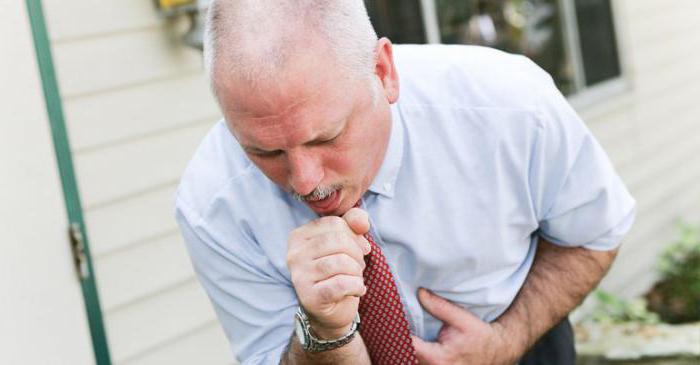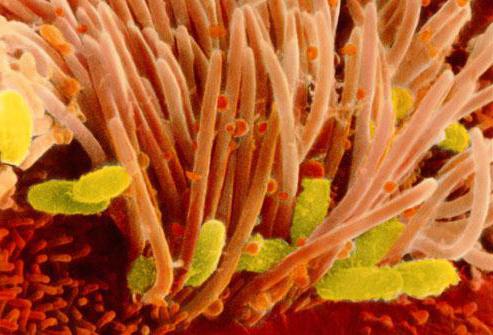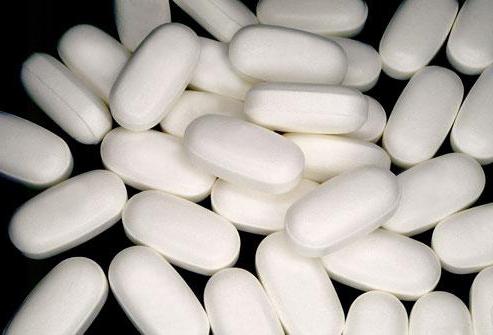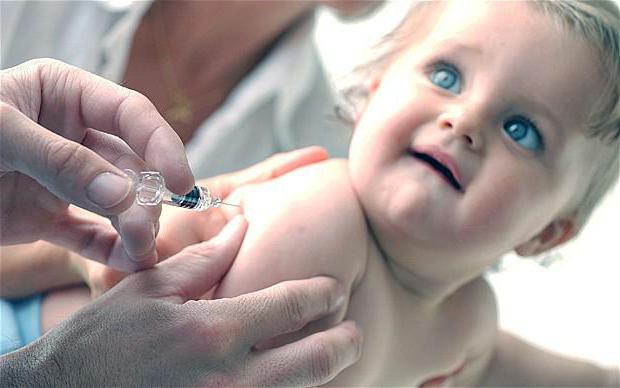Pertussis is a childhood disease, but people from any age group can get it. Another thing is how the disease will proceed and how dangerous the consequences in case of complications can be. In this sense, children under two years old are most at risk. This article will provide information on what this infectious disease is and how to treat whooping cough in adults and especially in children.
Medical history
It is very likely that this disease was known in antiquity. So, there is evidence that in the writings of Hippocrates, and then Avicenna, the symptoms of a disease very similar to whooping cough were described. But this is a moot point, but the description of whooping cough by Guillain de Baillot in 1578, who observed an epidemic of the disease in Paris, which then claimed many lives, is known for certain. Somewhat later, information appeared about outbreaks of a similar disease in England and Holland. How to treat whooping cough, they did not know then, since nothing was known about what exactly caused this dangerous ailment.
Causative agent of whooping cough
The causative agent of the disease was isolated from the sputum of a sick child only in 1906 by scientists J. Borde and O. Zhangu. This is a microorganism in the form of a stick with rounded edges, motionless and not forming a spore, transmitted by airborne droplets and affecting the epithelium of the bronchi. The entry gate for this infection is the upper respiratory tract. At the genetic level, the bacterium resembles a pertussis bacillus, which causes similar pertussis, but a more easily occurring disease.
Pertussis is very demanding on environmental conditions, and therefore it is extremely unstable outside the human body and quickly dies under the influence of ultraviolet radiation, disinfectants, and elevated (more than +55 º) temperature. Therefore, household items, as a rule, are not contagious, and the source of infection is an exclusively ill person, regardless of how this pathology occurs in him.
At the same time, close contact is necessary for the transmission of the disease, since, without being volatile, the pertussis bacterium does not spread even from one room to another, scattering around the patient no further than 2 meters. Pertussis (Bordetella), getting into the human body, produces toxins, which cause the symptoms characteristic of the disease.
Symptoms
Before figuring out how to treat whooping cough, you need to familiarize yourself with the signs and characteristics of this disease. The main symptom is a specific cough, but it does not appear immediately. As with any infection, the course of this disease occurs in several stages. The incubation period of pertussis is an average of a week, but may be shorter or longer. The prodromal (catarrhal) period has the same symptoms as ARI. The temperature may not be at all, the cough is dry, moderate; possible runny nose, laryngitis. Manifestations of intoxication are absent. During this period, which lasts about two weeks, the patient is most infectious; he, unaware of whooping cough, is able to infect his entire environment. The nature of the cough is gradually changing, it is not affected by any traditional symptomatic drugs, and when the spasmodic period of the disease begins, it is so characteristic that there are no problems with the diagnosis.

Attacks of convulsive cough are characterized by short cough tremors. They follow on the exhale one after another, not giving the patient the opportunity to inhale for a sufficiently long time. When, finally, it succeeds, the air breaks through a narrowed glottis with a typical whistling sound, which is called a reprise. Further, the “cough tremors - reprise” cycle is repeated 2 to 15 times, the attack can last 1-5 minutes and ends with the separation of a large amount of viscous sputum, and often vomiting. The number of seizures, depending on the severity of the disease, can be from 10 to 25 per day, most often - at night and in the morning. The doctor, having heard such a cough, no longer doubts that the disease is whooping cough. How to treat - depends on many nuances, but more on that later.
Before attacks, which may differ in the severity of the course, a person may feel discomfort and anxiety, sore throat. In severe cases, during a convulsive cough, the patient's face turns red, the veins swell, tears pour out of the eyes, and the tongue protrudes so far forward that this can lead to rupture of the frenum. Hemorrhages on the face, conjunctiva of the eyes are possible. Between attacks, the patient usually feels completely normal.
The most dangerous in such attacks, especially for young children, is oxygen starvation, up to holding and stopping breathing, when you have to literally reanimate a child: suck out mucus from the nose and throat, do artificial respiration. Parents who are in a panic are unlikely to be capable of these actions, and for the most part they don’t have any idea how to treat whooping cough in children at home, so young children must be hospitalized if this disease is suspected.
The spasmodic period of the disease can last from 2 to 8 weeks. Gradually, the frequency and severity of the attacks weaken, but with layering of other infections, coughing can resume. The period of residual phenomena lasts another 2-3 weeks, and sometimes even longer. Not without reason, in some countries, whooping cough is called a “one-day cough” - this disease does occur very slowly.
What happens in the body
Getting on the mucous membrane of the upper respiratory tract, the pathogen multiplies there and irritates the ciliary epithelium of the bronchi, trachea and larynx, thereby causing a spasm. In this case, bacteria do not enter the bloodstream and do not spread throughout the body. Subsequently, a violation at the level of the central nervous system, namely the formation of a focus of excitation in the respiratory center of the brain, joins the local receptor irritation. As a result, coughing attacks can occur in response to any irritant: bright light, loud sound, pain syndrome. You should always remember this if the question arose about how to treat cough with whooping cough - sometimes an attack can be prevented.

Excitation can also capture other centers of the brain: vomiting, vascular, skeletal muscle center. Therefore, after an attack of coughing, vomiting is not uncommon, there are vascular spasms and convulsions. Due to hypoxia, oxygen metabolism is disrupted in the body. In addition to all of the above, pertussis toxin inhibits blood cells, thereby disrupting the functioning of the immune system. In this state, a layering of a secondary infection is quite possible, and this is the next insidiousness of this disease.
Diagnosis of whooping cough
A preliminary diagnosis of pertussis can be made on the basis of the clinical picture, but it requires mandatory confirmation by laboratory tests. The matter is complicated by the fact that the bacterium is sown only in the prodromal period and when the cough has just begun. But at the very beginning of the disease, the symptoms are too general to suspect whooping cough - unless contact with the patient is known. And at the height of the disease, when there is no doubt, the bacterium is no longer sown - as a rule, after 4 weeks after the onset of the disease, the patient no longer poses a danger to others.

Among the symptoms, in addition to coughing, there are changes in the lungs that are noticeable with x-rays, as well as moderate leukocytosis (due to an increase in the number of lymphocytes) in the blood, but these data are not an absolute confirmation of the diagnosis. In the later stages of the disease, serological methods are used to detect antibodies. Currently developed methods of rapid diagnosis of whooping cough, allowing to make the correct diagnosis in the shortest possible time.
Forms of the disease
A typical form of whooping cough is the symptom of which includes spasmodic coughing. But there are also atypical types of the disease that are easier to tolerate, but certainly dangerous in the epidemiological plan, since it does not occur to anyone to isolate the patient in time. For example, the erased form, in which the disease is accompanied by a completely “ordinary” cough, is perhaps more intrusive, but there is no spasmodic period.
The abortive form of whooping cough begins typically, but after a while quickly breaks off, and a convulsive cough lasts no longer than 1 week. There is also a completely asymptomatic type of pertussis that occurs in vaccinated children and adults. At the same time, along with the complete absence of symptoms, the pathogen is seeded.
Actually, the disease is not very typical, but very difficult in children under the age of 1 year. As a rule, the incubation and catarrhal periods are shortened, and the convulsive period lasts longer. In this case, a spasmodic cough with reprisals as such may be absent. Attacks are expressed in anxiety, screaming, extremely dangerous breath holdings.
Different forms of the disease are distinguished, depending on the number of coughing attacks and the presence of concomitant events, such as respiratory arrest, convulsions, facial cyanosis, cardiovascular disorders, respiratory failure, from mild (no more than 15 attacks per day) to severe (over 25) .
Complications
Specific complications of whooping cough include pulmonary emphysema, the appearance of umbilical and inguinal hernias, rupture of the eardrum, hemorrhage, respiratory rhythm disturbance, cerebral circulation, encephalopathy. Non-specific complications are associated with the attachment of a secondary bacterial infection. It can be pneumonia, bronchitis, otitis media, tonsillitis, etc.
Pertussis treatment: antibiotics
Now that it’s clear what causes and what threatens such an infectious disease as whooping cough, how to treat symptoms, or at least alleviate them, is a perfectly logical question. Only young children or patients with a severe form of the disease or in the presence of complications are hospitalized with a diagnosis of whooping cough. The rest needs to know how to treat whooping cough at home. However, the term “treat” in the sense of using medication for whooping cough is not entirely appropriate. Of course, like any bacterial infection, the causative agent of pertussis is destroyed by antibiotics. But these funds are effective only in the initial stage of this disease.

If the fact of communication between a child or an adult with an already ill person is known, then information on which antibiotics treat pertussis at an early stage will undoubtedly be useful. Pertussis is destroyed by erythromycin, ampicillin, tetracycline and chloramphenicol, while penicillin in relation to its given bacterium is completely powerless. The use of these drugs in the catarrhal period of the disease is quite capable of stopping the development of the disease, without leading to the spasmodic period.
Perhaps the only case when antibiotics can be used for prevention is a known fact of contact with an already ill person. This will allow you to destroy the pathogen in time, not allowing it to colonize the epithelium of the respiratory system. To this in her articles and interviews, setting out how to treat whooping cough in children, E. Komarovsky, a very popular pediatrician nowadays, draws the attention of parents.
But in the future, pertussis bacillus already leaves the body, and the cause of the attacks lies in the “head”, namely in the defeat of the cells of the cough center. Therefore, during a spasmodic cough, using antibiotics, if we are not talking about emerging bronchopulmonary complications, is already impractical and even dangerous, since their effect in itself can provoke a more severe course of the disease. How to treat whooping cough at its later stages is described in detail below.
Other medicines
The doctor may prescribe funds to improve bronchial patency and relieve bronchospasm, for example, the drug "Eufillin." Due to their ineffectiveness, antitussive and mucolytic drugs are practically not used. Hormones are prescribed if the disease is complicated by respiratory arrest, in the presence of encephalic disorders; antihistamines are also used in the treatment. Soothing agents are used for a mild form of the disease, or even psychotropic drugs - for a severe course of the disease. If the disease has acquired severe forms, medications that improve cerebral circulation, immunotherapy, oxygen therapy to reduce the effects of hypoxia may be appropriate. In any case, drugs are prescribed only by a doctor, even if it is a question of how to treat pertussis at home.
Creating the conditions for recovery
Unfortunately, medicine does not have methods that can cure pertussis overnight if the disease has already passed into the phase of spasmodic cough. How is pertussis treated if antibiotics are powerless for the reason that the body no longer has pathogens? It is possible and necessary to strive to alleviate seizures and prevent complications. For this, certain conditions must be observed. Explaining how to treat whooping cough, Komarovsky pays special attention to these circumstances.
So, it is extremely important that the air in the room is moist, cool, and the atmosphere is calm. As a rule, between attacks, the child feels quite healthy, therefore, the maximum possible amount of time is necessary, calling for the help of all relatives, to spend on the street, if the weather allows: there is no severe frost or, conversely, dry heat. At the same time, physical activity and active games should be avoided.
Interestingly, it is possible to reduce the excitation of the cough center and thus significantly accelerate recovery if you create another focus in the brain, no less active, with the help of strong positive emotions. In the case of children, new toys will be suitable, distracting activities, recreational trips.
Special attention will have to be given to eating. It is necessary to feed the sick child in small portions, chopping pre-products. If after eating an attack followed by vomiting, after 10-15 minutes it is worth supplementing it - there is a possibility that subsequent attacks will be easier.
Patients often complain that a residual dry cough after pertussis does not go away for a very long time. How to treat it if the usual symptomatic remedies are absolutely powerless? First of all, be patient and try to clean and moisturize the inhaled air by all means, as often as possible to be at water bodies or just in the fresh air.
All of the above recommendations will be equally useful if there is a need for detailed information on how to treat whooping cough in adults and children.
How to treat pertussis folk remedies
One of the old ways is to use garlic for whooping cough. Moreover, it is used both inside and inhale its smell, hanging a few cloves on the neck. Alternative medicine also suggests drinking milk boiled with garlic, as well as rubbing the patient’s chest with garlic gruel with pork fat, and making compresses from the garlic-honey mixture.
Of course, there are many recipes for how to treat pertussis in children with folk remedies using herbs. Actually, for adults, these methods are also appropriate. The most commonly mentioned plants are thyme, violet, marshmallow root, thyme grass, plantain, coltsfoot, from which infusions and decoctions are prepared. In general, with whooping cough, traditional medicine recommends almost the same remedies as with any cough. Among the recipes there is a decoction of figs in milk, juice of black radish with honey. It seems that it is better not to use all the methods separately, but to use them together with the treatment recommendations already set out.
Prevention
If you suspect a pertussis, the patient must first be isolated, remembering the exceptional contagiousness of this disease. It is believed that vaccination is the only method for preventing pertussis. In Russia, it has been practiced since 1965 for vaccinating children under the age of 3 years. However, vaccination does not guarantee lifelong immunity. Congenital passive protection against the disease also does not exist - even a newborn can become infected. But after a pertussis once transferred, a stable immunity is already forming - repeatedly, this disease is extremely rare.

Talking about how to treat whooping cough in children, Komarovsky E.O. draws attention to the fact that vaccination provides immunity for only a few years, but thereby protects children at the age when the disease is most dangerous for them. However, in fairness, one cannot fail to mention that the most serious complications are observed for the DTP vaccine, which is why developments are constantly being done to make the vaccine against pertussis safer for children.